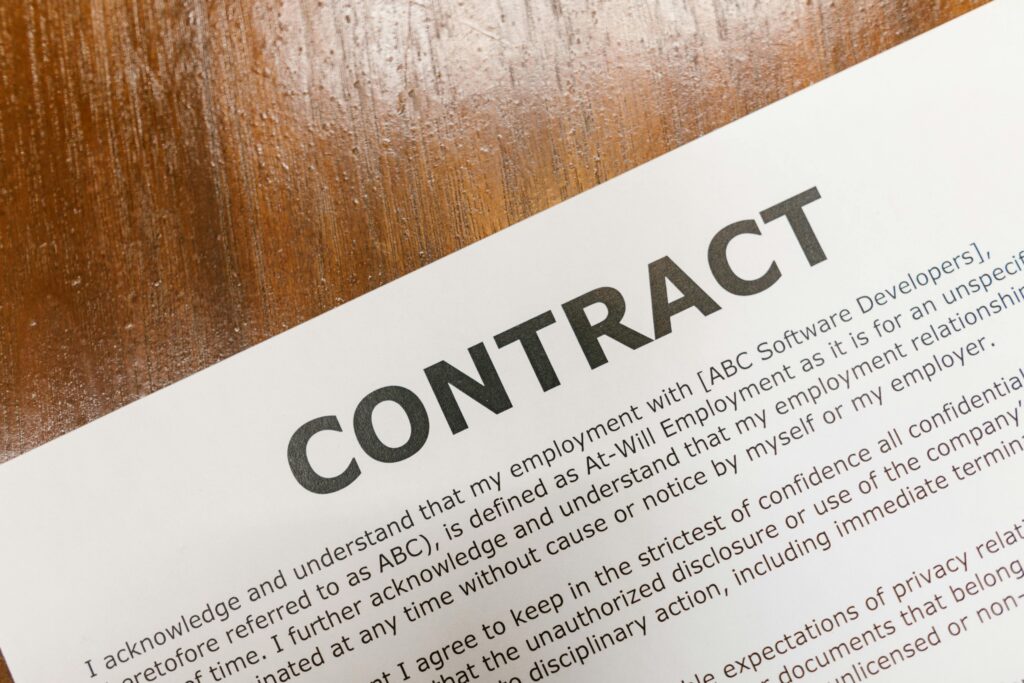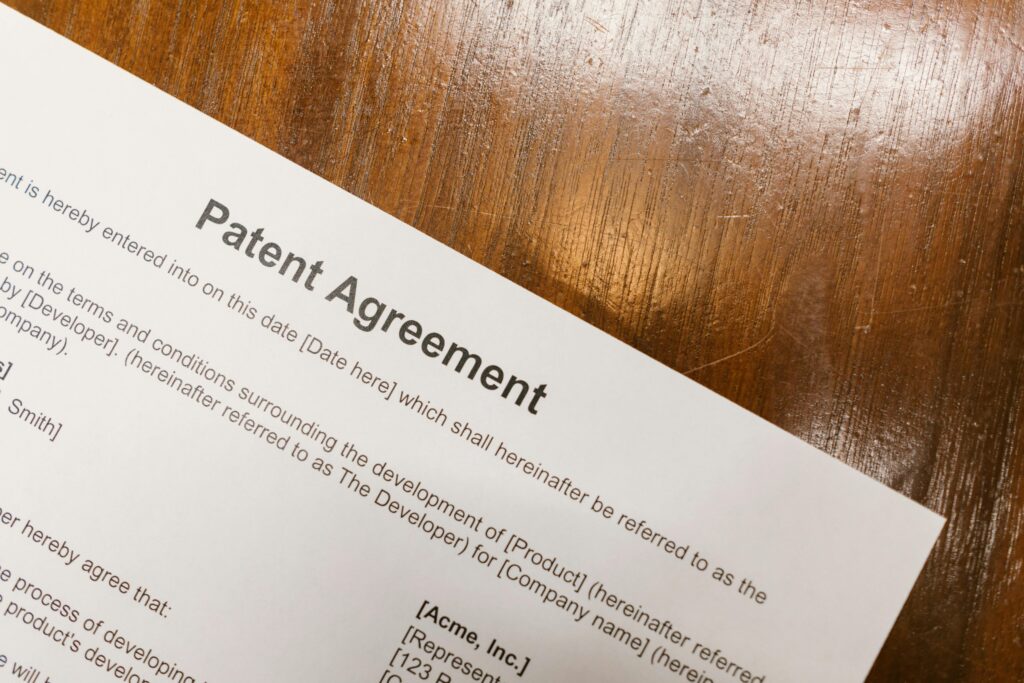Let’s skip the fluff. You’re building something new. It might be software, hardware, biotech, AI, or some clever tool the world hasn’t seen yet. Whatever it is, you want to protect it. You’ve heard about patents. Maybe even tried to read up on them. But the deeper you dig, the more confusing it gets.
The Real Reason People File Patents Themselves
It’s Not Just About Saving Money
Most people think filing a patent on your own is just a way to avoid lawyer fees. Sure, that’s part of it.
But talk to any founder who’s tried it and you’ll hear a different story.
It’s about speed. Control. Knowing exactly what’s going into your application.
Not waiting weeks for someone to “get back to you.” Not dealing with confusing emails from lawyers who don’t understand your tech.
You’re already doing hard things. Writing code. Building prototypes. Testing, failing, iterating.
Filing a patent is just one more thing on your plate. So it needs to work with your rhythm—not slow you down.
Doing it yourself (with the right tools) gives you that control.
But here’s where it gets tricky.
Patents are weird. They’re legal, but also technical. You’re writing for an examiner, not a customer or investor. And the way you write matters—a lot.
One wrong word and your idea might not be protected. One missed detail and someone else could get around your patent. That’s why doing it totally alone is risky.
This is where patent platforms come in. They’re not magic.
But they can guide you, check your work, and in some cases, even have real attorneys review your draft before it’s filed.
What to Look for in a Platform
Here’s the thing: Not all patent platforms are built the same. Some are just software.
Others are marketplaces. A few are built for startups, by people who’ve actually launched companies before.
The best ones do a few things really well. They help you figure out if your idea is even patentable. They help you describe your invention clearly.
They guide you on what to include (and what to leave out). And they make sure your application is filed correctly.
Some will even flag parts of your patent that might be weak. Others will help you respond to examiners if your patent gets challenged.
That kind of support matters more than you think.
But let’s get real. You don’t want to read a list of platforms and compare checkboxes.
You want to know which one actually fits the way you work. So let’s break them down by mindset.
If You’re a Builder Who Just Needs It Done
You want something fast, easy, and not expensive. You’ve got code to write. You want to protect your idea now, not next month.
PowerPatent is a good fit here. It was built for people like you—startup founders, technical folks, makers.
It combines software to speed things up, with real attorney review so you’re not guessing.
It turns your invention into a real patent draft, then gets it filed properly, without slowing you down.
You don’t have to write like a lawyer. You just explain what you built, how it works, and what makes it new.
PowerPatent’s system pulls that into a smart template. Then their attorneys check it over. You stay in control. And you don’t have to pay five figures just to file a solid patent.
It’s simple, it’s fast, and it works.
You can learn how it works here: https://powerpatent.com/how-it-works
If You’re a Researcher or Technical Lead
You’ve probably written papers, maybe even published. You’re comfortable explaining your tech. But patents feel like a different world.
You might want a platform that lets you dig deep into the technical details. One that doesn’t dumb things down—but still makes sure the legal side is covered.
PowerPatent works well here too, since it lets you go as deep as you want with your invention.
You control the details. Their team handles the legal structure.
This is especially useful if you’re working in biotech, AI, quantum, or other advanced tech.
You can explain things in your own words, and their system helps map it to a patent format that works.
Want to see it in action? Here’s where to start: https://powerpatent.com/how-it-works
If You’re a First-Time Founder Feeling Unsure
Feeling Lost? That’s Normal—and Fixable
Let’s be honest. The first time you look into patents, it feels like stepping into a completely different world.
One where simple ideas are buried in 40-page documents filled with legal phrases and strange diagrams.
You might start reading about “claims,” “prior art,” or “non-obviousness,” and wonder—do I really need this?
If you’re building a company from the ground up, you’ve already got a hundred things on your mind.
Product. Team. Fundraising. Growth. Patents sound like something for later. Or something for bigger companies.
But here’s what most early founders miss: the earlier you think about IP, the more strategic it becomes.
This isn’t just legal paperwork. It’s an asset. It’s leverage in fundraising.
It’s a moat around your tech. It’s proof to investors and partners that you’re building something serious, something that’s yours.
The Confidence Problem—and How to Solve It
Many first-time founders feel they don’t “know enough” to file a patent. They get stuck trying to learn everything before they start.
Or they wait until they feel like their product is “ready.”
This slows things down.
The truth is, you don’t need to master patent law. You don’t even need to have a final product. You just need to start where you are, with what you’ve built so far.
The smartest move isn’t to learn everything—it’s to get the right help, early.
Platforms like PowerPatent are designed to walk you through the process without making you feel dumb.
You don’t need to speak legal. You just need to know your own invention. And explain it clearly.
Their system guides you step by step. It asks smart questions.
Then it helps you translate your work into patent-ready language, with real patent attorneys reviewing your draft to make sure it holds up.
So you can move forward without second-guessing every decision.
Turn Your Uncertainty Into a First-Mover Advantage
Here’s a strategy that most first-time founders don’t realize: filing early can give you a real competitive edge.
The U.S. has a “first to file” system. That means whoever files first—not who builds first—gets the rights.
If you’re still polishing your prototype, and someone else files before you, you could lose the rights to patent your own invention.
That’s why smart founders file a provisional patent as soon as they have something real, even if it’s still evolving.
It gives you a filing date. It locks in your position. And it gives you a full year to refine your product and decide if you want to file a full patent later.
This move turns your early uncertainty into protection—and leverage.
And you don’t need a lawyer to do it. PowerPatent lets you file a solid provisional patent fast.
You explain your tech. They guide the structure. A real attorney checks your draft. And you’re protected.
You don’t have to figure it all out first. You just have to start.
How to Take Action Today (Even If You’re Not Ready to File)
Maybe you’re not quite there yet. Maybe your product is still taking shape. That’s okay. There’s still a smart way to prepare.
Start documenting what you’re building—how it works, what makes it different, why it solves a problem better than anything else out there.
Keep notes. Diagrams. Screenshots. Version histories.
This will help immensely when it’s time to file. And it makes your eventual patent much stronger.

Even better? You can use PowerPatent to start this process now, even before you’re ready to submit.
Their system helps you shape your thinking—so by the time you do file, you’re not starting from scratch.
This small step today can save you weeks later. And it means you’ll be ready to move fast when the time is right.
If you want to see how to turn your early ideas into real protection, start here: https://powerpatent.com/how-it-works
If You’re Scaling Fast and Need to File Multiple Patents
You Can’t Scale with a Single Patent Strategy
Once your company gains traction, protecting just one core idea isn’t enough. Your tech stack grows. Your product branches out.
New features, backend improvements, customer-specific integrations, and even internal tools—all of them might have real IP value.
And the biggest mistake fast-scaling startups make? Thinking one patent covers it all.
As you scale, your patent strategy needs to scale with you. This doesn’t mean dumping money into a law firm every time someone on your team has a new idea.
It means building a smart, repeatable workflow for capturing and protecting innovation as it happens.
The most strategic companies treat patent filing as part of their product development cycle.
That means every time you ship something new, you also evaluate whether it’s patent-worthy. And if it is, you act fast—before the demo, the launch, the press.
PowerPatent makes this mindset shift possible.
It lets your product and engineering teams feed raw technical ideas directly into a guided system that transforms them into well-formed patent applications.
Attorneys review and fine-tune the drafts, but the pace and control stay in your hands.
This is how fast companies stay ahead—by protecting what they’re building as they build it.
File Like a Portfolio, Not a One-Off
Think of each patent as a brick in your IP foundation. Filing just one doesn’t make your business defensible.
But filing multiple, strategically timed patents—each one tied to a key feature, technical edge, or product component—turns your IP into a true moat.
You want coverage across the stack: the customer-facing interface, the backend engine, the AI model you trained, the way you process data, the way you store it.
Each of these might be novel. Each might be protectable.
The challenge? You don’t want to slow down to make it happen.
That’s where the right platform gives you leverage. With PowerPatent, you can keep a steady drumbeat of filings without disrupting your roadmap.

It becomes a system: new feature → IP check → fast filing. Repeat.
Over time, this builds a dense portfolio that’s hard to work around—and attractive to investors, partners, and potential acquirers.
If you’re scaling fast, it’s not enough to have one patent. You need a plan to file quickly and often. PowerPatent helps you do it: https://powerpatent.com/how-it-works
Protect Before You Pitch
At this stage, your team is probably sharing your product more—more demos, more decks, more conversations. But with every pitch comes risk.
If you’re explaining a novel feature to a customer or investor, and it’s not yet protected, you could be giving away something valuable.
That’s why filing early, before exposure, is crucial.
Even if you’re weeks or months from launch, filing a provisional patent ahead of those conversations gives you a safety net. You’re still free to share, but now with protection.
It also signals professionalism. When investors ask about IP, you don’t say, “We’re thinking about it.”
You say, “We’ve filed patents on key components.” That changes the tone of the conversation. It tells people you’re serious, strategic, and in control.
And with a tool like PowerPatent, you don’t need a long back-and-forth with lawyers to make this happen.
You just prep the idea, run it through the platform, get it reviewed, and file—often in less time than it takes to finish your next sprint.
Want to put that process in motion today? Start here: https://powerpatent.com/how-it-works
If You’re a Developer Who Just Built Something Cool
Your Code Could Be Worth Protecting—Even If It Feels Small
Most developers don’t think about patents. They’re busy building, shipping, fixing bugs, optimizing queries, or hacking together quick solutions.
You ship fast. You iterate. You don’t want to get slowed down by paperwork. Totally fair.
But here’s something most engineers miss: the thing you just built—the thing that solved a problem no one else cracked yet—that might be worth protecting.
It could be a clever algorithm that makes your app load 3x faster. A new way to sync data across devices. A security method. A system architecture.
A smart use of existing APIs. If it’s unique and solves a technical problem in a new way, it’s not just “a fix”—it might be a patentable invention.

The best time to protect it? Right now, while it’s fresh in your head.
Not six months later when the product’s already launched and half the team has touched the codebase. That’s when details get fuzzy and momentum fades.
PowerPatent gives you a real-time way to capture and protect your code-driven inventions.
You don’t need to pause development or figure out legal stuff.
You just describe what you built, walk through the technical side, and their system helps shape it into a patent application.
A real attorney reviews it. And you move on with your sprint.
You Don’t Need to Know “Legal” to File a Strong Patent
One reason developers hesitate to file patents is that they assume they need to talk like lawyers.
But the truth is, you just need to talk like a developer—clearly, specifically, and with logic.
What does the code do? What problem does it solve? What’s different about your approach? Why is it better, faster, leaner, or more secure than what came before?
If you can answer those questions, you have everything you need to start.
And when you use a tool like PowerPatent, it bridges the gap between how you talk and how the patent office expects things to be framed.
The system pulls the important parts out of your explanation, structures it correctly, and gets an expert to review it.
You’re not guessing. You’re not writing a novel. You’re just documenting your own technical work—and locking in ownership before someone else sees it.
That’s not bureaucracy. That’s defense.
If you’ve never filed before, you can start today with just a few clicks: https://powerpatent.com/how-it-works
Capture the Edge Before It’s Common Knowledge
The thing about software is that it moves fast. What feels unique today could become standard practice tomorrow. Once that happens, it’s too late to file.
That’s why timing is everything.
Let’s say you figured out a better way to compress images without losing quality. Right now, it’s new. It’s yours.
But once it hits GitHub or a dev forum—or even just gets shipped with your app—it’s exposed. And if you didn’t file first, you may not get the chance to file at all.
This is why the smartest devs and technical teams use provisional patents like bookmarks.
They lock in what’s new, then keep iterating. You can update, improve, or replace pieces later. But you’ve already marked your spot.
PowerPatent makes this easy. You don’t need to leave your code editor and write a 30-page legal doc.

You just break down your method, submit it, and let the system and legal team handle the structure.
It’s how you stay protected without breaking your dev flow.
If your team is pushing code with real innovation, it’s time to start protecting it: https://powerpatent.com/how-it-works
If You’re a Hardware Founder Bringing a Product to Life
Building Something You Can Touch? That’s Where IP Gets Real
Hardware is visible. It’s tactile. When someone holds your product, they can often figure out how it works.
That’s the beauty of physical invention—but also the risk.
The moment your product is in someone else’s hands, it can be copied, reverse-engineered, or improved upon by a competitor.
That’s why filing patents early isn’t optional—it’s survival.
When you’re building hardware, you’re not just making a device. You’re making systems, mechanisms, processes.
You’re solving real-world problems with physical solutions that often haven’t been done before. That uniqueness is where the IP value lives.
And if you’re not capturing it, you’re leaving open ground for others to take advantage of what you’ve built.
This is especially critical in manufacturing-heavy sectors. Once your prototype turns into production tooling, molds, or assembly lines, your design is locked.
If you don’t protect it before that stage, you may have to redesign just to escape infringement.
That’s expensive and painful. And it’s entirely avoidable with a smart patent strategy.
PowerPatent helps hardware founders move fast without sacrificing legal coverage. You can file early, even if you’re in pre-production.
You document how the device works, what parts are innovative, and how it’s assembled.
Their system structures that into a patent draft, reviewed by real attorneys, so you can file before exposure.
This gives you room to breathe. You keep iterating your design, but now with legal protection in place.
Design Around It Before They Do
Another risk hardware companies face is design-around.
Someone sees your product, studies the mechanism, and builds something that’s 80% the same—but just different enough to dodge a weak patent.
That’s what happens when you describe your invention too narrowly.
The fix? Think like a competitor before they do.
When you file a patent through PowerPatent, you’re not just locking down your exact design. You’re encouraged to describe variations. Alternate shapes.
Different materials. Configurations that achieve the same result. This is how you make your patent broader, stronger, and harder to get around.
This approach doesn’t come naturally to most founders. You’re focused on what works today.
But platforms like PowerPatent help you zoom out and think strategically. What else could this look like? What other ways could someone implement your same idea?
That mindset shift turns your patent from a sketch into a fortress. One that blocks not just exact copies—but clever imitators, too.
Start building that kind of coverage here: https://powerpatent.com/how-it-works
Use Provisional Patents as a Product Map
In hardware, every version of your product has a story. From cardboard prototype to CAD file to production-ready model, each stage includes changes.
New parts. Improved tolerances. Better ergonomics. And with each improvement comes a new layer of potential IP.
You can treat provisional patents like version control for your innovation. Every time you lock in a new design, you file a provisional patent to preserve that snapshot.
You don’t need to write a fresh application from scratch every time.
PowerPatent makes it easy to build off your previous filing, update the details, and keep your IP current.
By the time you’re ready to file a full non-provisional patent, you’ve got a complete record of how your invention evolved—protected at every step.
This gives you freedom to keep developing, knowing your past work is safe.
It also makes your eventual patent much stronger, because you can show exactly how your idea matured.

Want to turn your prototypes into protected IP assets? Start the process now: https://powerpatent.com/how-it-works
Wrapping It Up
Filing a patent yourself isn’t just about skipping legal fees. It’s about staying in control. It’s about moving fast, protecting what you’ve built, and turning your innovation into something defensible. Something fundable. Something real.

Leave a Reply